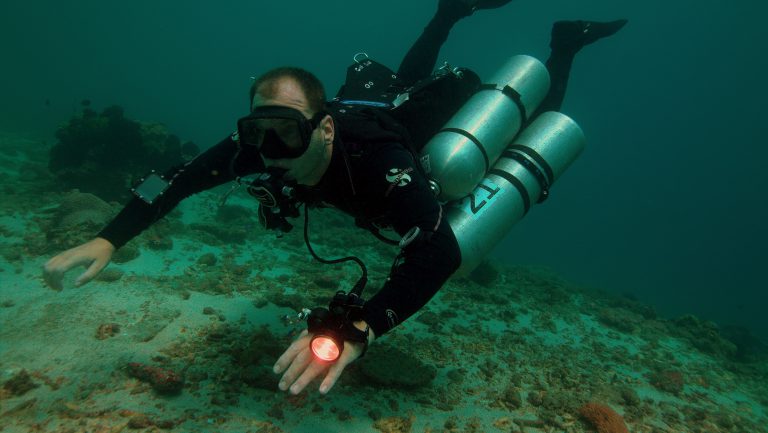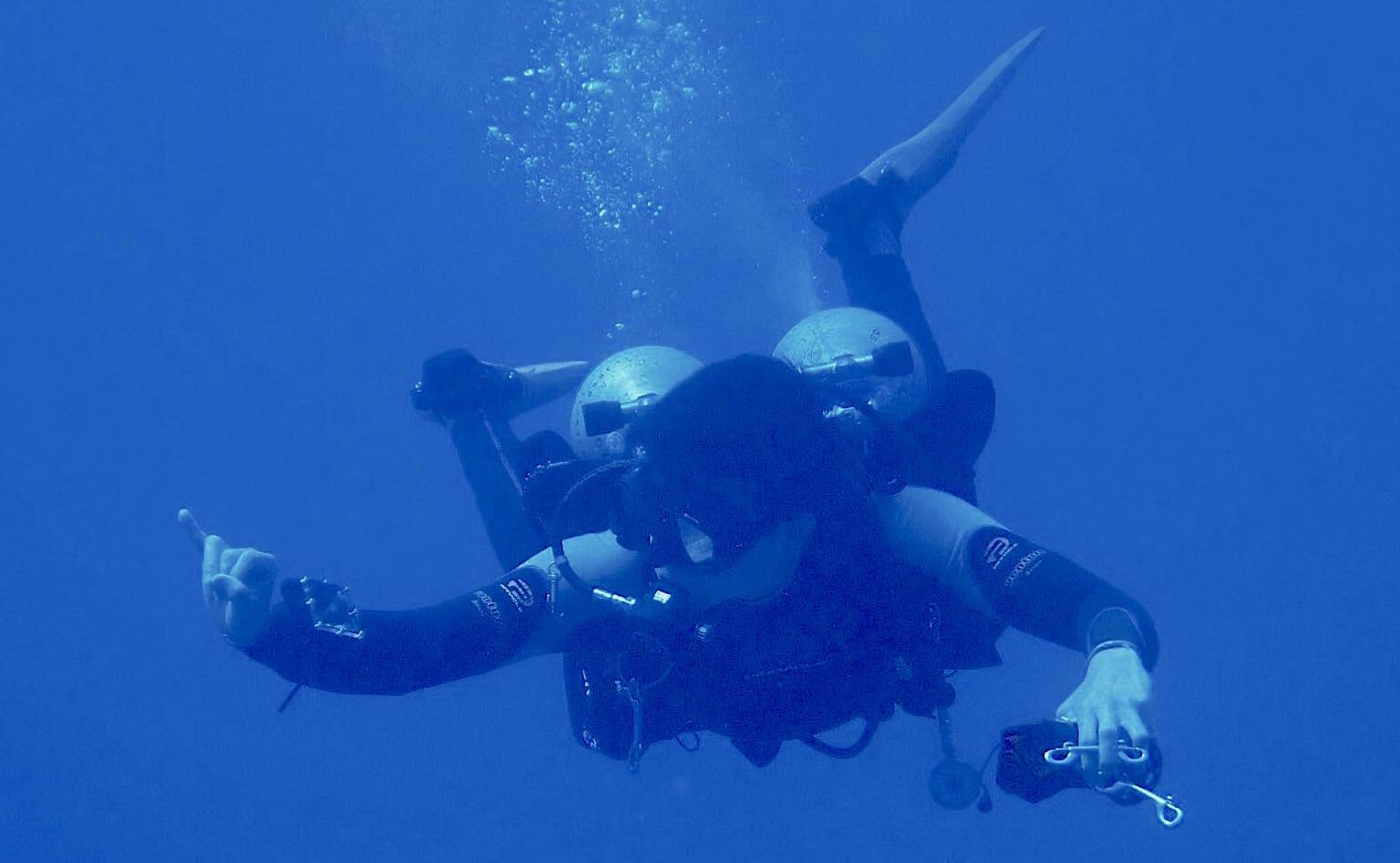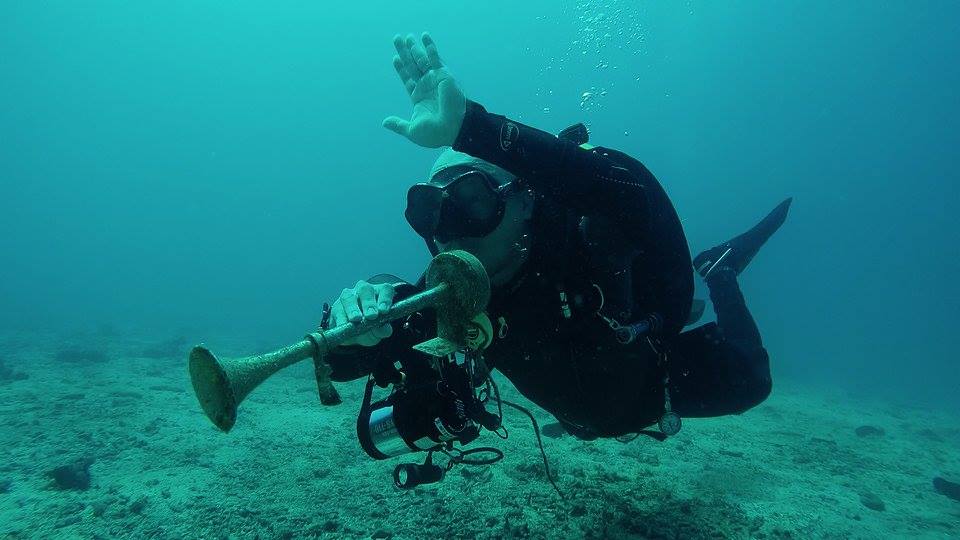
Education, Recreational
There are 5 main ways that divers communicate underwater.
What are they and how can we use them most effectively?
1. Light
A handheld torch which you can signal and get attention with.

2. Hand signals
Divers all know basic hand signals from when we learned open water. Sign language for divers.

3. Touch
Touch contact is also a way that we can communicate.
Holding on to another person’s arm or hand, or tapping them on the shoulder are both effective ways of touch communication.

4. Sound
Tapping on your tank, or making a sound with your hands is another common way of getting attention.

5. Writing
Writing on a slate or wet notes, provided you have these kinds of equipment with you, is also a very effective and unambiguous way of communicating.

Breaking it down
Now, each of these methods has its pros and cons. Let’s explore them all.
- 3 of the above methods are visual in nature (light, hand signals, and writing).
- 3 of them require close proximity (hand signals, touch, and writing)
- 2 of them allow communication over a distance (light and sound)
- And only 1 is unambiguous (writing)
Attention-seeking divers
One of the most common communication types required is getting another diver’s attention.
After which you can continue to elaborate on other forms of more unambiguous types of communication.
Over a distance, only light and sound work for this purpose.
However, sound is non-directional, whereas light is highly directional.
For me, I think a torch should always be available as a communication tool, for this exact reason.
Sound travels well, but unless you are already in visual range, it’s not going to work so well.
I’m sure you’ve had the experience of being in the water when someone is banging their tank, and you have no idea where it’s coming from.
In bad visibility, sound communication is definitely not as effective as light.
Awareness, always awareness
However, if a team is diving well, with good diving etiquette, maintaining good relative positions and line of sight, then a good dose of awareness is all you need to get someone’s attention.
A good habit I always teach my students, regardless of certification is to constantly look around at the other divers in the group.
When driving a car, you should check your mirrors every 20 secs.
Similarly, you should do the same thing while diving.
If we can all adopt this habit, then I won’t need to worry about getting someone else’s attention.
I’d only need to keep staring at that person, and I knew that in 20 secs or so, she would look right over at me!
Now, how much more comfortable would that dive be?
Knowing that you can count on your teammates looking out for you every minute!
Leon Boey
Leon Boey has been a technical and cave diver for decades. He founded the Livingseas Diving Center and is co-founder of the Livingseas Foundation, which focuses mainly on reef restoration. The result is what is now the most significant coral restoration site in Bali. Having traveled and dived worldwide, being surrounded by the diversity of life in a coral reef is still his best feeling.
CATEGORIES
SIGN UP FOR OUR FREE COURSES
Learn to
Be A Better Diver
Get into the nuts and bolts of how to be a better diver in our email series and reinforce your diving knowledge.
